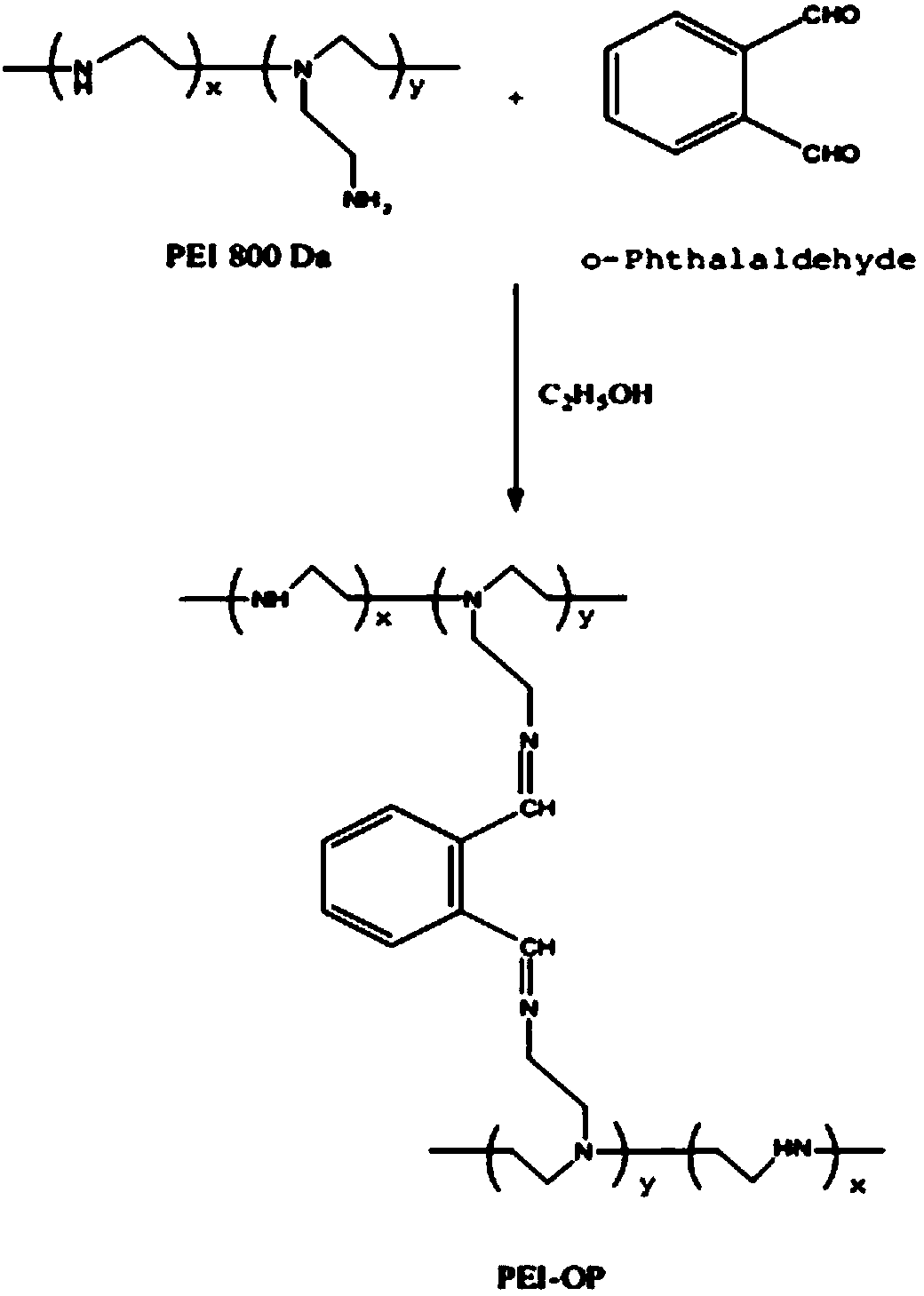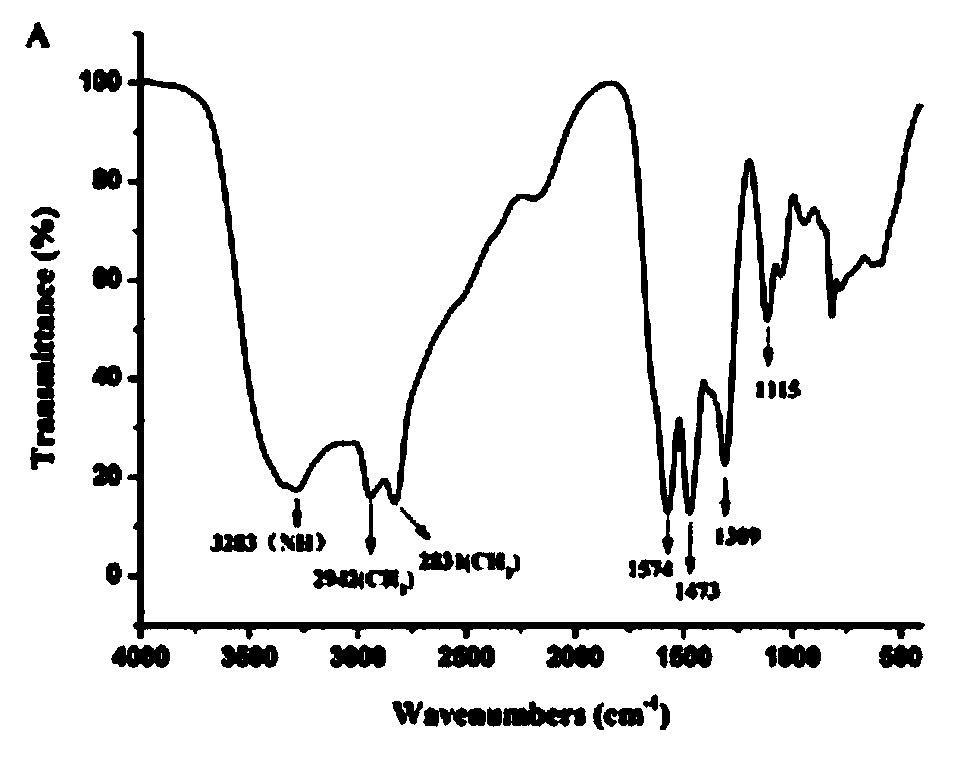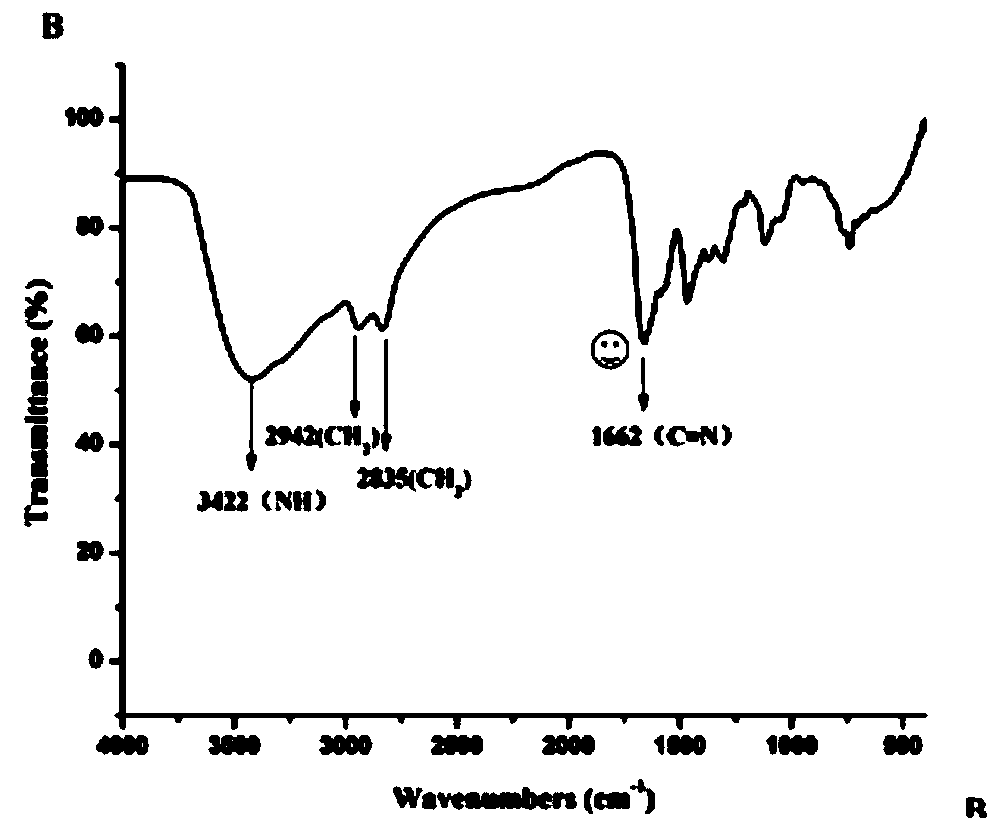Polycationic nucleic acid compound nano-particles as well as preparation method and application thereof
A nanoparticle and polycation technology, which is applied in the direction of drug combination, pharmaceutical formula, genetic material components, etc., to achieve the effect of inhibiting angiogenesis, avoiding adhesion, and improving the targeting effect
- Summary
- Abstract
- Description
- Claims
- Application Information
AI Technical Summary
Problems solved by technology
Method used
Image
Examples
Embodiment 1
[0047] The synthesis of embodiment 1 polycationic nucleic acid material (OPEI)
[0048] The synthetic route of polycationic nucleic acid material (OPEI) is as figure 1 shown. The whole reaction is carried out in an anhydrous and oxygen-free (high-purity nitrogen protection) environment, and the linear PEI 800Da and o-phthalaldehyde are reacted at a molar ratio of 1:2.5, and the reaction solvent is absolute ethanol (in anhydrous After adding anhydrous magnesium sulfate to ethanol, let stand for 48h, then distill to obtain fresh absolute ethanol for subsequent use). The infrared spectrum of PEI 800Da is as follows figure 2 shown. Dissolve PEI 800Da (1 mole) and o-phthalaldehyde (2.5 moles) in absolute ethanol to form 20 mL and 50 mL solutions, respectively. The reaction was carried out with stirring at room temperature, and the o-phthalaldehyde solution was added dropwise to the PEI 800Da solution using a constant pressure dropping funnel. Stop the reaction after 24 hours....
Embodiment 2
[0051] Example 2 Preparation of OPEI-encapsulated nanoparticles of plasmid DNA
[0052] The OPEI prepared in Example 1 was made into an aqueous solution with a concentration of 2 μg / μl, and diluted with sterilized water to form 20ng / μl, 40ng / μl, 100ng / μl, 200ng / μl, 1000ng / μl and 2000ng / μl solutions. In addition, the plasmid DNA containing 5'-GGAGUACCCUGAUGAGAUC-3' was made into an aqueous solution with a concentration of 20 ng / μl. Add an equal volume of the OPEI aqueous solution to the plasmid DNA aqueous solution, vortex for 5 minutes, and let stand for 20 minutes to obtain a series of nanoparticle solutions.
Embodiment 3
[0053] Example 3 Characterization of particle size and potential of nanoparticles
[0054] A series of particle solutions prepared in Example 2 are put into the test tank of the BIC90plus particle size potential analyzer, and the mass ratios of OPEI and plasmid DNA in the particles of the series of particle solutions are 1, 2, 5, 10, 50, 100, set The test temperature is 25°C, the medium is water, the viscosity is 0.89cp, the refractive index is 1.330, and the light scattering angle is 90°. , the detection wavelength is 659nm, each sample is tested 3 times, each run time is 2min, and the average particle size is recorded. Test results such as Figure 4 shown.
[0055] A series of particle solutions prepared in Example 2 are put into the test tank of the BIC90plus particle size potential analyzer, and the mass ratios of OPEI and plasmid DNA in the particles of the series of particle solutions are 1, 2, 5, 10, 50, 100, set The test temperature is 25°C, the medium is water, the...
PUM
| Property | Measurement | Unit |
|---|---|---|
| Viscosity | aaaaa | aaaaa |
| Particle size | aaaaa | aaaaa |
| Particle size | aaaaa | aaaaa |
Abstract
Description
Claims
Application Information
 Login to View More
Login to View More - Generate Ideas
- Intellectual Property
- Life Sciences
- Materials
- Tech Scout
- Unparalleled Data Quality
- Higher Quality Content
- 60% Fewer Hallucinations
Browse by: Latest US Patents, China's latest patents, Technical Efficacy Thesaurus, Application Domain, Technology Topic, Popular Technical Reports.
© 2025 PatSnap. All rights reserved.Legal|Privacy policy|Modern Slavery Act Transparency Statement|Sitemap|About US| Contact US: help@patsnap.com



